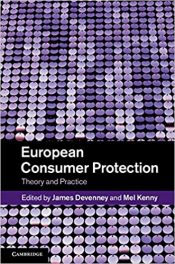Authors: Loizos Heracleous, Jochen Wirtz and Nitin Pangarkar
Publisher: McGraw-Hill – 246 pages
Book Review by Nano Khilnani
The airline industry is a nightmare for investors, owners and managers, with its intense price competition, costly personnel compensation, pay hike demand and strikes by unions, rising fuel costs, atrociously complex government regulations, frequent crashes, acts of terrorism and political upheavals.
If anything can go wrong in any business, it is much more likely to go wrong in the airline business. It is a dog-kill-dog and often dog-eat-dog industry, with numerous mergers and acquisitions of other airlines in efforts to cut costs and raise revenues.
But there is one airline that has not only overcome these challenges and consistently delivered excellent service to customers, but also turned a profit year after year since it started in 1972: Singapore Airlines.
I have flown on Singapore Airlines (SIA) several times and my experience was superbly pleasant and memorable. On time in departing and arriving, spotlessly-clean and new aircraft, courteous flight attendants who anticipate customers’ needs, superior cocktails and delicious food – all on smooth, quiet flights.
This book by three professors in business subjects at the National University of Singapore (NUS) looks at how SIA became the leading airline in the world, is the only airline in Fortune’s list of the world’s most admired companies, has been chosen frequently in customer polls as the “best airline” and has won numerous awards by peers in the airline industry.
The mission of Singapore Airline’s management to deliver superior service to its customers and at the same time not ‘break the bank’ was accomplished early on since its establishment. This mission is now termed as ‘cost-effective service excellence’ and it has pretty much become the airline’s motto.
The authors – Loizos Heracleous, Jochen Wirtz and Nitin Pangarkar – reveal to you the secrets of the world’s leading airline’s consistent success in a refreshingly different format. The book is like reading a long and wonderful magazine article with interesting photos. As is said, a photo is worth a thousand words; so is the case in this book.
But more than that, this book reveals expert reportage, such as the kind you find in top-notch newspapers, with solid data backing up the written text and illustrated in clear, easy-to understand charts. (There is nothing that I abhor more in a story than loose statements not backed up by numbers – the story then looks likely a dirty little structure with a wobbly foundation).
The commercial airline industry began in 1912 with the first scheduled international flight in that year, but it was not until 30 years later that it began to grow rapidly, after the piston engine was replaced by the turbo-prop engine.
The authors start out by giving you a perspective on the airline industry – taking a look first at its statistics in relation to international travel and world commerce.
In 2006 – I suppose the year the latest figures were available when the book was published in 2009 – about 900 total airlines worldwide carried 2.1 billion passengers, flew over 3.9 billion passenger-kilometers and carried 38.9 million tons of freight.
The aviation industry carried in that year about 40 percent (by value) of the world’s manufactured exports and about half of the world’s international tourists. Industry experts forecast that by 2014 the airlines will be carrying as much as 80 percent of the value of total worldwide freight.
Because the numbers are so large relative to the total seven billion people on earth, the airline industry’s impact on other parts of world commerce is immense. The authors state that the “direct, indirect, induced and catalytic contribution of the civil aviation industry to the global economy has been estimated to be about US$3,560 billion or 7.5 percent of the world’s gross domestic product or GDP, employing 32 million people.”
The financial contribution of all airlines and those sectors of the world economy affected by it amounts then to about one-thirteen of global GDP. In other words, divide the global GDP pie and one of the thirteen slices on it is the airline industry.
Fixed and operating costs are high in this industry, but what is more startling is that they keep climbing higher. Ina ten-year comparison, total value of fuel consumed by airlines worldwide was about $60 billion, representing around 15 percent of total operating costs. But just 10 years later, in 2007, fuel cost had jumped to $140 billion, constituting a substantial 30 percent of all operating costs.
Airlines overall had net profits in the 1996-2000 period, but in a zigzag pattern of $5.3 billion in 1996, a big jump to $8.5 billion in 1997, then a slight decline to $8.2 billion in 1998, then a slight rise to $8.5 billion in 1999, followed by a steep plunge to $3.7 billion in 2000. However the percentage of these net income numbers relative to their operating revenues were puny, ranging from 2.9 percent to a teeny 1.1 percent.
In a separate study covering the 2001-2004 time frame, the overall return on invested capital in the airline business was a small 3.3 percent, less than half the cost of that capital, which was 7.2 percent.
After the September 11, 2001 terrorist bombings, the airline industry took a bloodbath, as harrowing fear plunged airline travel volume and revenues. Every year from then until 2005, airlines had red ink, except in 2003 when they showed $7.56 billion in profit. But in that five-year 2001-2005 period, the global airline industry had total net losses of $25.51 billion.
Given these stark facts and dismal numbers, numerous airlines continue to operate with deficit spending adding to their accumulated losses. But Singapore Airlines has not only overcome all these difficulties, it has declared no loss in any of its 40 years of operation from 1972 to 2001. What are the reasons this airline has built up such an admirable and enviable record? What does its management, suppliers and employees do differently from other airlines? I urge you to get this book, read it and find out.






